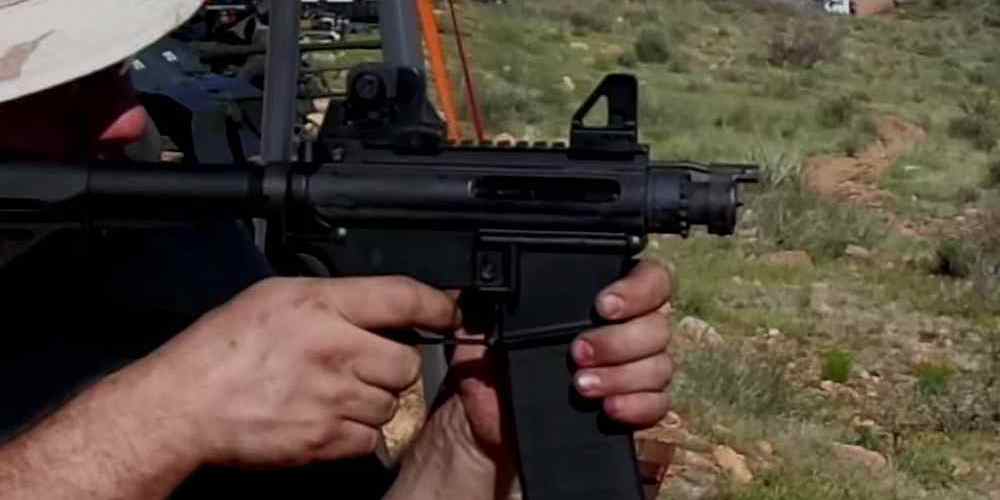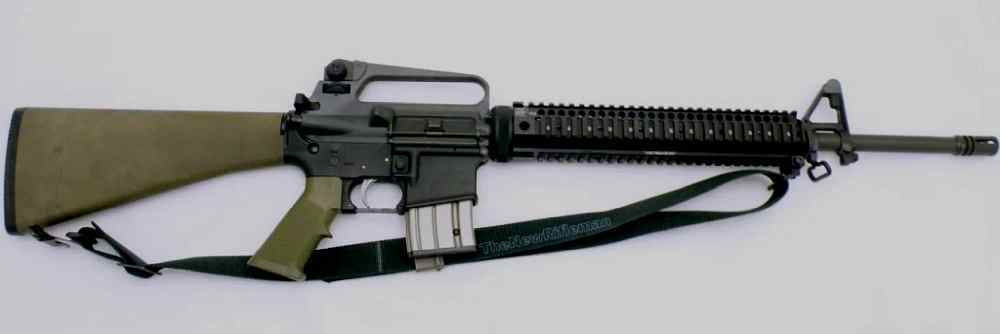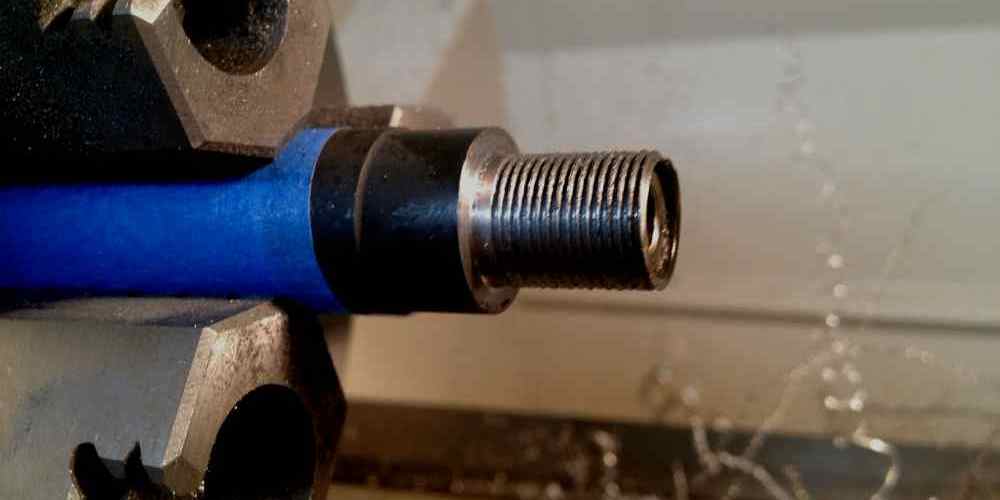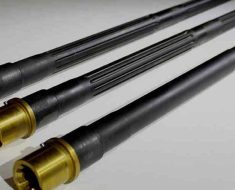“Precision Rifling for Unmatched AR15 Barrel Accuracy”
Benefits of Rifling in AR15 Barrel Accuracy
When it comes to achieving optimal accuracy with your AR15 rifle, the role of rifling in the barrel cannot be overstated. Rifling refers to the spiral grooves cut into the inner surface of the barrel, which impart a spin to the bullet as it travels down the barrel. This spin stabilizes the bullet in flight, reducing the effects of factors such as wind drift and bullet drop, ultimately leading to improved accuracy.
One of the key benefits of rifling in AR15 barrel accuracy is the reduction of bullet yaw. Yaw refers to the wobbling motion of a bullet as it travels through the air, which can negatively impact its trajectory and accuracy. By imparting a spin to the bullet, rifling helps to stabilize it and minimize yaw, resulting in more consistent and precise shots.
Another advantage of rifling in AR15 barrel accuracy is the promotion of gyroscopic stability. The spin generated by rifling creates a gyroscopic effect, which helps to keep the bullet oriented in the direction of travel. This stability is crucial for maintaining accuracy over long distances, as it helps to counteract the destabilizing forces that can cause a bullet to veer off course.
In addition to improving accuracy, rifling also plays a role in enhancing the overall performance of the AR15 rifle. The spin imparted by rifling helps to increase the bullet’s rotational velocity, which can lead to improved terminal ballistics and penetration. This can be particularly beneficial for hunting or self-defense applications, where shot placement and bullet performance are critical factors.
Furthermore, rifling can also have a significant impact on the longevity of the barrel. The spiral grooves created by rifling help to evenly distribute the forces exerted on the barrel during firing, reducing wear and prolonging the barrel’s lifespan. This can result in cost savings for the shooter, as they will not have to replace their barrel as frequently.
In conclusion, rifling plays a crucial role in AR15 barrel accuracy by stabilizing the bullet in flight, reducing yaw, promoting gyroscopic stability, and enhancing overall performance. By understanding the benefits of rifling and its impact on accuracy, shooters can make informed decisions when selecting a barrel for their AR15 rifle. Whether for precision shooting, hunting, or self-defense, rifling is a key factor in achieving optimal performance and accuracy with your AR15 rifle. So next time you hit the range, remember to appreciate the cutting-edge technology that is rifling in your AR15 barrel.
History of Rifling in Firearms
Rifling is a crucial component in the accuracy of firearms, including the popular AR15 rifle. The history of rifling dates back to the 15th century when gunsmiths began to experiment with ways to improve the accuracy and range of their firearms. By the 16th century, rifling had become a common practice in the manufacturing of firearms, and it has continued to evolve and improve over the centuries.
Rifling refers to the spiral grooves cut into the interior of a gun barrel. These grooves cause the bullet to spin as it travels down the barrel, stabilizing its flight and improving accuracy. The rifling also helps to create a gas seal, which increases the velocity of the bullet and improves overall performance.

In the early days of rifling, gunsmiths used simple hand tools to cut the grooves into the barrel. This process was time-consuming and labor-intensive, but it was effective in improving the accuracy of firearms. As technology advanced, gunsmiths began to use more sophisticated tools and techniques to create rifled barrels.
One of the most significant advancements in rifling technology came in the 19th century with the invention of the button rifling process. This process involves pulling a hardened steel button through a barrel to create the rifling grooves. Button rifling is faster and more precise than traditional hand-cut rifling, making it a popular choice for modern firearms manufacturers.
The AR15 rifle is known for its accuracy and reliability, thanks in part to the rifling in its barrel. The AR15 typically features a 1:7 or 1:9 twist rate, which refers to the number of inches it takes for the rifling to make one complete revolution. The twist rate of a barrel can have a significant impact on the accuracy and performance of a firearm, so it is important to choose the right twist rate for your needs.
In addition to the twist rate, the quality of the rifling in an AR15 barrel is also crucial to its accuracy. The rifling must be cut precisely and evenly to ensure that the bullet spins properly as it travels down the barrel. Poorly cut rifling can cause the bullet to wobble or tumble, leading to decreased accuracy and performance.
Many AR15 barrels are made using a process called cold hammer forging, which involves hammering a mandrel into the barrel to create the rifling grooves. This process results in a durable and accurate barrel that is capable of withstanding high temperatures and pressures. Cold hammer forging is a popular choice for AR15 barrels because it produces consistent and reliable results.
In conclusion, rifling plays a vital role in the accuracy and performance of firearms, including the AR15 rifle. The history of rifling is a testament to the ingenuity and innovation of gunsmiths throughout the centuries. Today, modern technology has made rifling more precise and efficient than ever before, ensuring that firearms are more accurate and reliable than ever. Whether you are a seasoned shooter or a novice, understanding the role of rifling in AR15 barrel accuracy is essential for achieving optimal performance on the range.
Importance of Twist Rate in Rifling
When it comes to achieving optimal accuracy with your AR15 rifle, the twist rate of the rifling in the barrel plays a crucial role. Rifling refers to the spiral grooves cut into the inner surface of the barrel, which cause the bullet to spin as it travels down the barrel. This spinning motion stabilizes the bullet in flight, improving its accuracy and consistency.
The twist rate of the rifling is typically expressed as a ratio, such as 1:7 or 1:9. This ratio represents the number of inches the bullet must travel down the barrel to complete one full rotation. For example, a 1:7 twist rate means that the bullet will make one complete rotation every 7 inches of travel.
The twist rate of the rifling is important because it determines how well the bullet will stabilize in flight. If the twist rate is too slow, the bullet may not spin fast enough to stabilize, leading to erratic flight patterns and reduced accuracy. On the other hand, if the twist rate is too fast, the bullet may spin too quickly, causing it to destabilize and lose accuracy.
In general, heavier bullets require a faster twist rate to stabilize properly, while lighter bullets can be stabilized with a slower twist rate. For example, a 1:7 twist rate is ideal for stabilizing heavier bullets, such as those used in long-range shooting, while a 1:9 twist rate may be better suited for lighter bullets used in close-quarters combat.
It’s important to note that the twist rate of the rifling is just one factor that affects accuracy. Other factors, such as bullet weight, velocity, and barrel length, also play a role in determining how well a rifle will perform. However, the twist rate is a critical component that should not be overlooked when trying to achieve maximum accuracy with your AR15 rifle.
When selecting a barrel for your AR15 rifle, it’s important to consider the twist rate of the rifling. If you plan on shooting heavier bullets for long-range precision shooting, a faster twist rate, such as 1:7, may be the best choice. On the other hand, if you prefer lighter bullets for close-quarters combat, a slower twist rate, such as 1:9, may be more appropriate.
Ultimately, the twist rate of the rifling in your AR15 barrel can have a significant impact on the accuracy and performance of your rifle. By understanding the importance of twist rate and selecting the right barrel for your shooting needs, you can ensure that your AR15 rifle is operating at its full potential. So, next time you’re looking to upgrade your rifle, don’t forget to consider the role of rifling in barrel accuracy.
Comparing Rifling Methods for AR15 Barrels
When it comes to achieving optimal accuracy with your AR15 rifle, the barrel plays a crucial role. One of the key factors that contribute to accuracy is the rifling of the barrel. Rifling refers to the spiral grooves cut into the inner surface of the barrel, which cause the bullet to spin as it travels down the barrel. This spinning motion stabilizes the bullet in flight, resulting in improved accuracy.
There are several different methods of rifling that are commonly used in AR15 barrels, each with its own advantages and disadvantages. The two most common types of rifling are cut rifling and button rifling. Cut rifling involves cutting the grooves into the barrel using a cutting tool, while button rifling involves pushing a hardened steel button through the barrel to create the grooves.
Cut rifling is known for producing extremely precise and consistent rifling patterns, which can result in excellent accuracy. However, cut rifling is a time-consuming and labor-intensive process, which can make it more expensive than other rifling methods. Button rifling, on the other hand, is a faster and more cost-effective method of rifling, but it may not produce the same level of precision as cut rifling.
Another factor to consider when choosing a rifling method for your AR15 barrel is the twist rate. The twist rate refers to the rate at which the rifling spirals down the barrel, and it can have a significant impact on the stability and accuracy of the bullet. A faster twist rate will cause the bullet to spin more rapidly, which can be beneficial for stabilizing heavier bullets or bullets with a longer length. However, a faster twist rate may not be necessary for lighter bullets or shorter bullets, and it can actually decrease accuracy in some cases.
In addition to cut rifling and button rifling, there are other rifling methods that are less commonly used in AR15 barrels. For example, hammer forging involves hammering a mandrel through the barrel to create the rifling, which can result in a very smooth and uniform rifling pattern. However, hammer forging is a more expensive process than cut rifling or button rifling, and it may not offer significant advantages in terms of accuracy.
Ultimately, the best rifling method for your AR15 barrel will depend on your specific needs and preferences. If you are looking for the highest level of accuracy and are willing to invest in a more expensive barrel, cut rifling may be the best option for you. If you are looking for a more cost-effective option that still offers good accuracy, button rifling may be a better choice. Whichever rifling method you choose, it is important to consider the twist rate and other factors that can impact the performance of your rifle.
In conclusion, rifling plays a critical role in the accuracy of your AR15 rifle, and choosing the right rifling method is essential for achieving optimal performance. Whether you opt for cut rifling, button rifling, or another rifling method, be sure to consider the twist rate and other factors that can affect the stability and accuracy of your bullets. By selecting the right rifling method for your AR15 barrel, you can ensure that your rifle performs at its best and delivers accurate shots every time.
Future Innovations in Rifling Technology
When it comes to achieving optimal accuracy in firearms, the barrel plays a crucial role. The rifling of a barrel, which refers to the spiral grooves cut into the bore, is a key factor in determining the accuracy of a rifle. In the world of AR15 rifles, rifling technology has seen significant advancements in recent years, leading to improved accuracy and performance.
Rifling serves to impart spin to the bullet as it travels down the barrel, stabilizing its flight and improving accuracy. Traditional rifling methods involve cutting grooves into the barrel in a straight line, creating a spiral pattern that imparts spin to the bullet. However, recent innovations in rifling technology have introduced new methods that offer even greater precision and consistency.
One such innovation is the use of button rifling, which involves pulling a hardened steel button through the barrel to create the rifling grooves. This method allows for tighter tolerances and more consistent rifling, resulting in improved accuracy. Button rifling is particularly well-suited for AR15 barrels, as it can produce tighter groups and better long-range performance.
Another cutting-edge rifling technology is the use of polygonal rifling, which features a smooth, rounded bore with no sharp edges or corners. This design reduces fouling and makes cleaning easier, while also improving accuracy by reducing bullet deformation and increasing velocity. Polygonal rifling is becoming increasingly popular in AR15 barrels for its ability to enhance performance and accuracy.
In addition to these advancements in rifling technology, the use of advanced materials in barrel construction has also contributed to improved accuracy in AR15 rifles. Barrels made from high-quality stainless steel or carbon fiber offer greater durability and consistency, leading to better performance on the range or in the field. These materials also help to reduce barrel wear and prolong the life of the rifle.
As technology continues to evolve, we can expect to see even more innovations in rifling technology that further enhance the accuracy and performance of AR15 rifles. From improved rifling methods to advanced materials, the future of barrel technology looks promising for shooters looking to maximize their accuracy and precision.
In conclusion, rifling plays a critical role in determining the accuracy of AR15 rifles. Recent advancements in rifling technology, such as button rifling and polygonal rifling, have led to improved performance and consistency in AR15 barrels. Coupled with the use of advanced materials in barrel construction, these innovations are helping shooters achieve greater accuracy and precision on the range. As technology continues to progress, we can expect to see even more cutting-edge developments in rifling technology that further enhance the performance of AR15 rifles.







